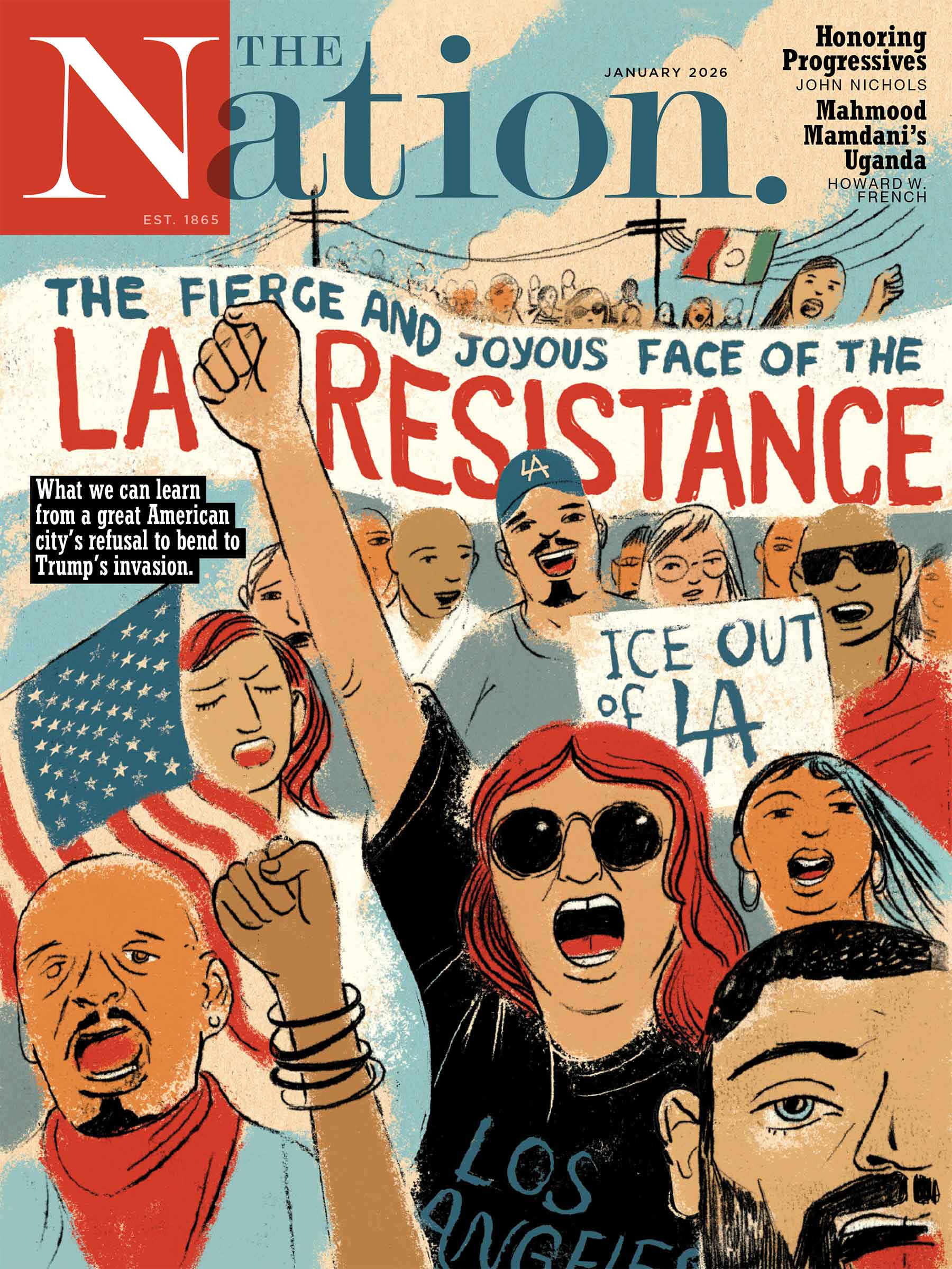Want to Save Democracy? Organize a Union in Your Workplace.
Authoritarian regimes make crushing unions a top priority for a reason: Strong, independent unions are the best safeguard against tyranny.
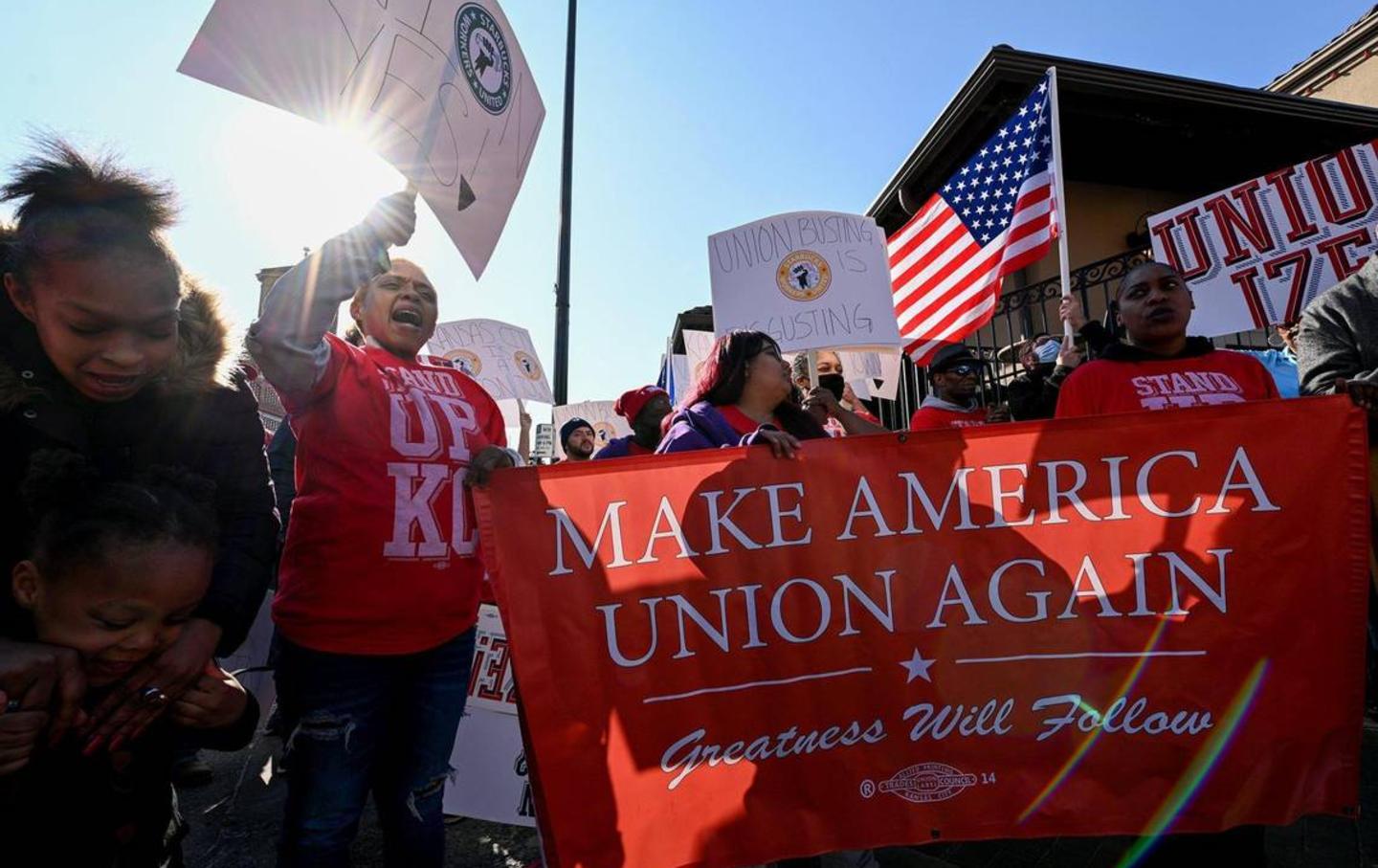
Dozens of Starbucks employees and union supporters protested alleged anti-union tactics by the company outside a Kansas City Starbucks on March 3, 2022.
(Kansas City Star via Getty Images)It’s easy to feel powerless. The US government is enabling Israel’s genocide in Palestine and deporting immigrants to concentration camps in El Salvador. Elon Musk is gutting public services. And corporations, emboldened by the new regime, are urging it to go even further and roll back workers’ rights and public accountability. These forces can feel “too big to fail,” which raises the question: How can we meaningfully fight these powerful actors?
If you want to fight the rise of fascism, organize a union in your workplace—or get a job and help your coworkers organize. There’s a reason that authoritarian regimes often make crushing unions their top priority: Free and independent unions are the best safeguard of democracy.
Unionizing provides workers with the means of building power outside of capital and the state. A strong labor movement could launch a general strike in protest of a repressive regime that would shut down the economy and force concessions—or at least galvanize resistance and turn popular opinion against the state, as the 1943 strike at the Fiat factory in Mirafiori, Italy, which helped bring down Benito Mussolini’s dictatorship, demonstrated. The threat of a general strike has not lost its power: In 2019, during the first Trump administration, Sara Nelson, the president of the Association of Flight Attendants union, helped end a government shutdown by calling for one. After flights were grounded in New York City, politicians reached a deal to reopen the government within hours.
Unionizing also allows workers to leverage their power to resist state and corporate demands, while protecting workers from retaliation when they speak out against injustice—both within and outside the workplace. In a heroic example of unionized workers refusing work to protect human rights, workers at a Scottish Rolls Royce plant in 1973 refused to repair engines used by the Chilean dictatorship. Their union had already issued statements condemning the junta and its torture and murder of their fellow trade unionists; this was a means of putting their beliefs into action and helping to save lives.
As the US government persecutes marginalized groups and as corporations respond by dropping their pretext of caring about social justice and ending their diversity, inclusion, and equity programs, US unions must likewise become or remain a means of collective advocacy. Rank-and-file organizing within Starbucks Workers United, the union campaign I helped launch in 2021, has meant that the union has spoken out on a range of issues—from LGBTQ rights to racial justice to solidarity with Palestine. Through actions like “Strike with Pride”—a national strike over the company’s cuts to coverage of gender-affirming care, retaliation against queer organizers, and removal of pride decorations from cafes—the Starbucks union is mobilizing within the labor movement to make these demands over human rights mainstream.
Even where workers do not already have left-wing sympathies, a strong and independent labor movement can change its members’ beliefs and make authoritarianism less appealing. Right-wing populism recognizes that workers are angry, but instead of channeling that anger upward, toward the corporate bosses and their collaborators, its survival relies on directing resentment downward, toward immigrants, LGBTQ people, and other marginalized groups. Union-busting often follows this same template, as corporations try to prevent workers from building solidarity with each other and instead stoke divisions within the workforce. Union organizing unites people around class, helping to build genuine community and solidarity between groups the ruling class seeks to pit against each other. Through shared struggle, workers who might otherwise have been attracted to right-wing populism often develop a deeper understanding of the ways their own interest is entwined with their coworkers’—including the coworkers who belong to groups that might be painted as “the enemy.”
A 2019 study indicated that even where white working-class voters had “psychological tendencies” toward authoritarianism, involvement in unions frequently “inoculated” them against voting for Trump. But the impact of unionization on members’ outlook goes far beyond the ballot box: Authoritarian regimes rely on the public looking the other way from injustice (or cheering it on), while the labor movement emphasizes that an injury to one is an injury to all and urges collective action to confront abuse.
If unions are our best hope to reverse course, what should the labor movement prepare for as authoritarians take power in the United States? The playbook for undermining or outlawing independent unions has several components, including attempting to co-opt unions, restricting or eliminating existing unions, and creating loyal or company unions to create a semblance of worker voice without giving workers real power.
Co-opting existing unions is one of the most straightforward strategies, targeting existing fault lines within the labor movement, but its scale is limited since it relies largely on the consent of the co-opted. In India, for example, unions are typically linked to political parties; thus, the RSS, a far-right nationalist paramilitary organization, has both a political wing—Narendra Modi’s ruling Bharatiya Janata Party—and a labor wing. In other countries, unions that were initially independent have since aligned with right-wing political groups: Poland’s Solidarność evolved from an independent union formed during an illegal wildcat strike against authoritarian state socialism into a supporter of the reactionary Law and Justice party.
Right-wing tendencies have always existed within the US labor movement. Most early unions, even tho se that organized Black and white workers into interracial locals, supported the Chinese Exclusion Act of 1882. As government repression targeted leftist and anti-war unions in the beginning of the 20th century, many unions adopted increasingly conservative platforms, culminating in purges of Communist organizers from the labor movement at the height of the red scare. The Teamsters endorsed Nixon in 1972 and Reagan in 1980. Is their president’s current coziness with Trump—Sean O’Brien spoke at the Republican National Convention last year; while the union declined to endorse a candidate, it released polling data indicating that members largely supported Trump—a true departure from their past?
Not necessarily, but it is a concerning sign—especially when workers at companies ranging from Chipotle to Amazon are seeking to join the Teamsters as part of a commitment to joining the labor movement and building a better world. O’Brien’s right-wing turn also included tweeting his approval of Senator Josh Hawley’s anti-DEI and anti-trans op-ed, “The Promise of Pro-Labor Conservatism.” Unions must resist the temptation to accept a “pro-labor conservatism” rooted in macho, white-supremacist nationalism. The United Auto Workers has recently pivoted from declaring “Trump is a scab” during the election season to writing “We’re ready to work with Trump” in the pages of The Washington Post.
Even if the UAW thinks its members will benefit from Trump’s erratic tariffs—which has put the UAW at odds with the Canadian autoworkers’ union and has already resulted in layoffs of UAW members at some domestic auto plants—making a bargain with this administration is a fundamentally unwise decision. Any wins gained through such compromises would come at the cost of the UAW’s moral compass and labor movement solidarity: the very things that make a union a powerful force for justice.
Where authoritarians are unable to co-opt unions, they frequently restrict their ability to operate, criminalizing many actions, targeting union leaders, and changing labor law to make organizing much harder. In Turkey, for example, Erdoğan’s regime has made an already-challenging climate for organizing even more repressive. The state has suppressed strikes, arrested union leaders, and used the state of emergency it declared in 2016 after a failed coup attempt to fire about 130,000 public-sector workers, claiming they were disloyal to the government.
Popular
“swipe left below to view more authors”Swipe →Sound familiar? Trump’s recent attacks on federal workers’ unions—including his executive order stripping most federal workers of their right to organize—follow the same playbook. This attempt to ban unions within a wide range of government agencies on “national security” pretexts doesn’t even try to hide its retaliatory intent of preventing “hostile unions” (as the administration’s lawsuit refers to many federal unions) from acting as a countervailing force through collective bargaining.
The Trump administration has further targeted union organizers and members across sectors based on their immigration status, including sheet-metal worker Kilmar Armando Abrego Garcia, a member of SMART, who was abducted and taken to El Salvador’s notorious maximum security prison due to a so-called “administrative error” that the Trump administration has refused to reverse, in defiance of judicial orders. ICE is also known to have kidnapped a United Farm Workers leader, Alfredo “Lelo” Juarez; revoked the work authorizations of 200 unionized manufacturing workers in Kentucky who are members of the IUE-CWA; abducted unionized graduate students, including Rumeysa Ozturk and Mahmoud Khalil; seized SEIU member Lewelyn Dixon, a University of Washington lab tech; and raided a roofing company where workers had protested safety conditions, disappearing 37 workers whose families do not know their whereabouts.
Finally, the Trump administration has signaled its intention to repeal Section 8(a)2 of the National Labor Relations Act (NLRA), which bans company unions—organizations that are dominated or controlled by the boss, often with the intention of preventing free and independent unions from gaining traction instead. In between assertions about the “Judeo-Christian tradition, stretching back to Genesis, recogniz[ing] fruitful work as integral to human dignity [and] as service to God” and policy proposals to ban critical race theory trainings, encourage “Sabbath rest,” and reduce overtime pay thresholds, the labor section of Project 2025 lays out a plan to facilitate the creation of works councils and other forms of what it calls “non-union worker voice and representation.”
Before the passage of the NLRA in 1935, many businesses created company unions. After using the National Guard to massacre striking coal miners in an encampment in Ludlow, Colorado, in 1914 (burning 11 children alive), John D. Rockefeller Jr., embarked on an effort to restore his reputation through a public relations campaign that included an “employee representation plan” under his control. Company unions ran rampant in industries ranging from steel to textiles to railways to photography. The NLRA’s prohibition was designed to put an end to this practice to help remove barriers to workers organizing freely.
Today, advocates of “associational” or “alternative” unionization, like labor scholar Tom Kochan (who remains a staunch supporter of collective bargaining, as well), argue that because union density is so low, “labor law needs to open up to support a range of voice options.” For very different reasons, some of the Project 2025 authors, including Oren Cass, share this view: Cass has maintained that the Republican Party should be more open to unions (within a narrower definition of what “protected concerted activity” entails) and has advocated for workers’ councils and placing workers on corporate boards.
While these alternatives may give workers more voice—i.e., a forum to express opinions—they don’t provide workers real power—the ability to bargain about issues and build an independent organization. Moreover, rather than helping open the door to forming a real union, they often make it more difficult to organize. If workers are likely to face an intense union-busting campaign and retaliation for forming an independent union, but the company is encouraging participation in an alternative model, many workers would settle for the safer but powerless option.
Even during the best of times, organizing a union is not easy; labor law in the United States is extremely weak, and, as labor professor John Logan writes, corporations “are prepared to do whatever is necessary, lawful or unlawful, to crush their organizing campaigns.” But in our current moment, it is critical that workers continue to organize in order to build power independent from corporations and the state, and to insist on their unions maintaining principled positions rather than negotiating with authoritarians. Growing democracy in the workplace is our best line of defense for democracy outside of it, too.
Time is running out to have your gift matched
In this time of unrelenting, often unprecedented cruelty and lawlessness, I’m grateful for Nation readers like you.
So many of you have taken to the streets, organized in your neighborhood and with your union, and showed up at the ballot box to vote for progressive candidates. You’re proving that it is possible—to paraphrase the legendary Patti Smith—to redeem the work of the fools running our government.
And as we head into 2026, I promise that The Nation will fight like never before for justice, humanity, and dignity in these United States.
At a time when most news organizations are either cutting budgets or cozying up to Trump by bringing in right-wing propagandists, The Nation’s writers, editors, copy editors, fact-checkers, and illustrators confront head-on the administration’s deadly abuses of power, blatant corruption, and deconstruction of both government and civil society.
We couldn’t do this crucial work without you.
Through the end of the year, a generous donor is matching all donations to The Nation’s independent journalism up to $75,000. But the end of the year is now only days away.
Time is running out to have your gift doubled. Don’t wait—donate now to ensure that our newsroom has the full $150,000 to start the new year.
Another world really is possible. Together, we can and will win it!
Love and Solidarity,
John Nichols
Executive Editor, The Nation
More from The Nation
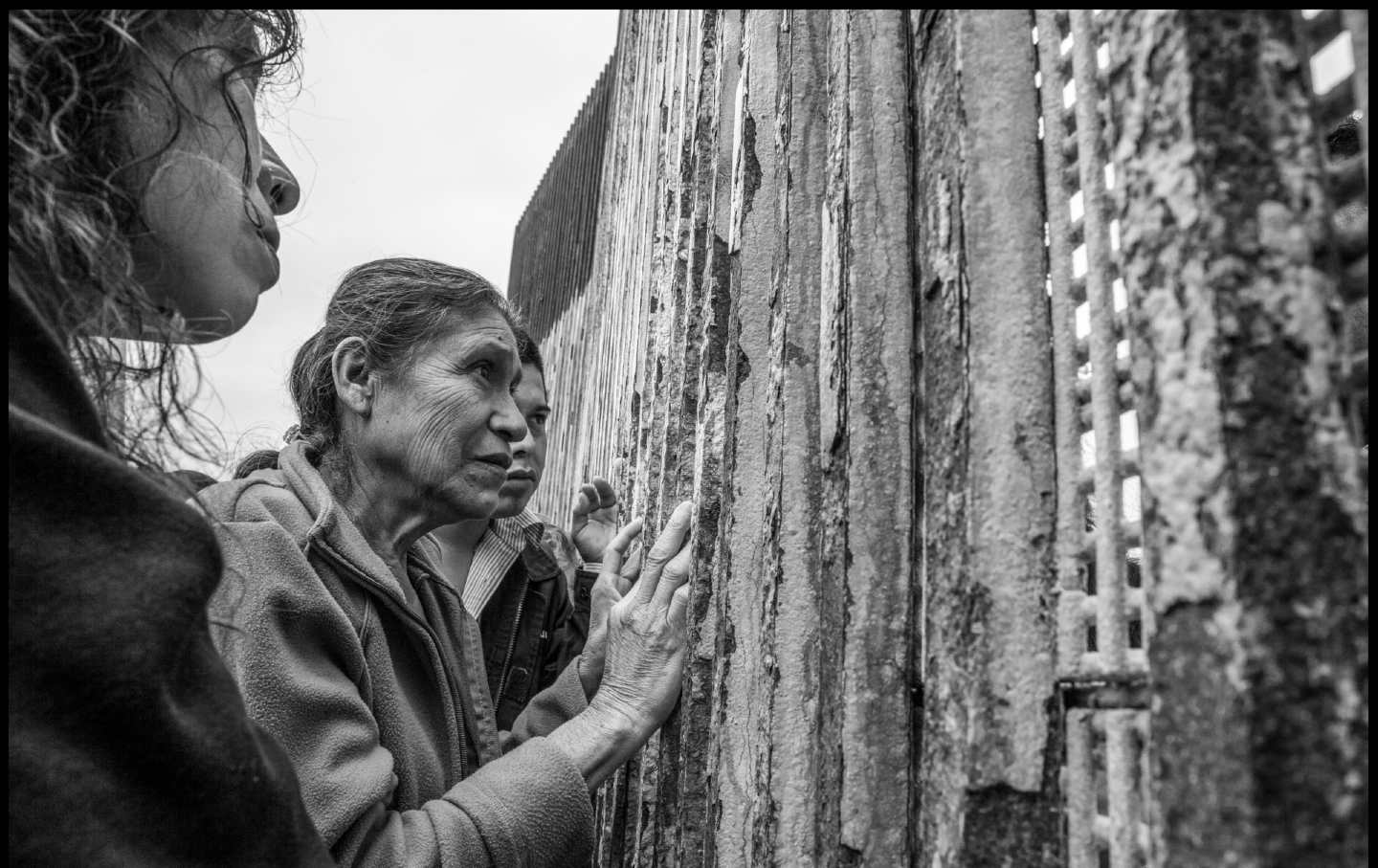
A Movement-Building Strategy for All Workers A Movement-Building Strategy for All Workers
Why we need a freedom agenda.
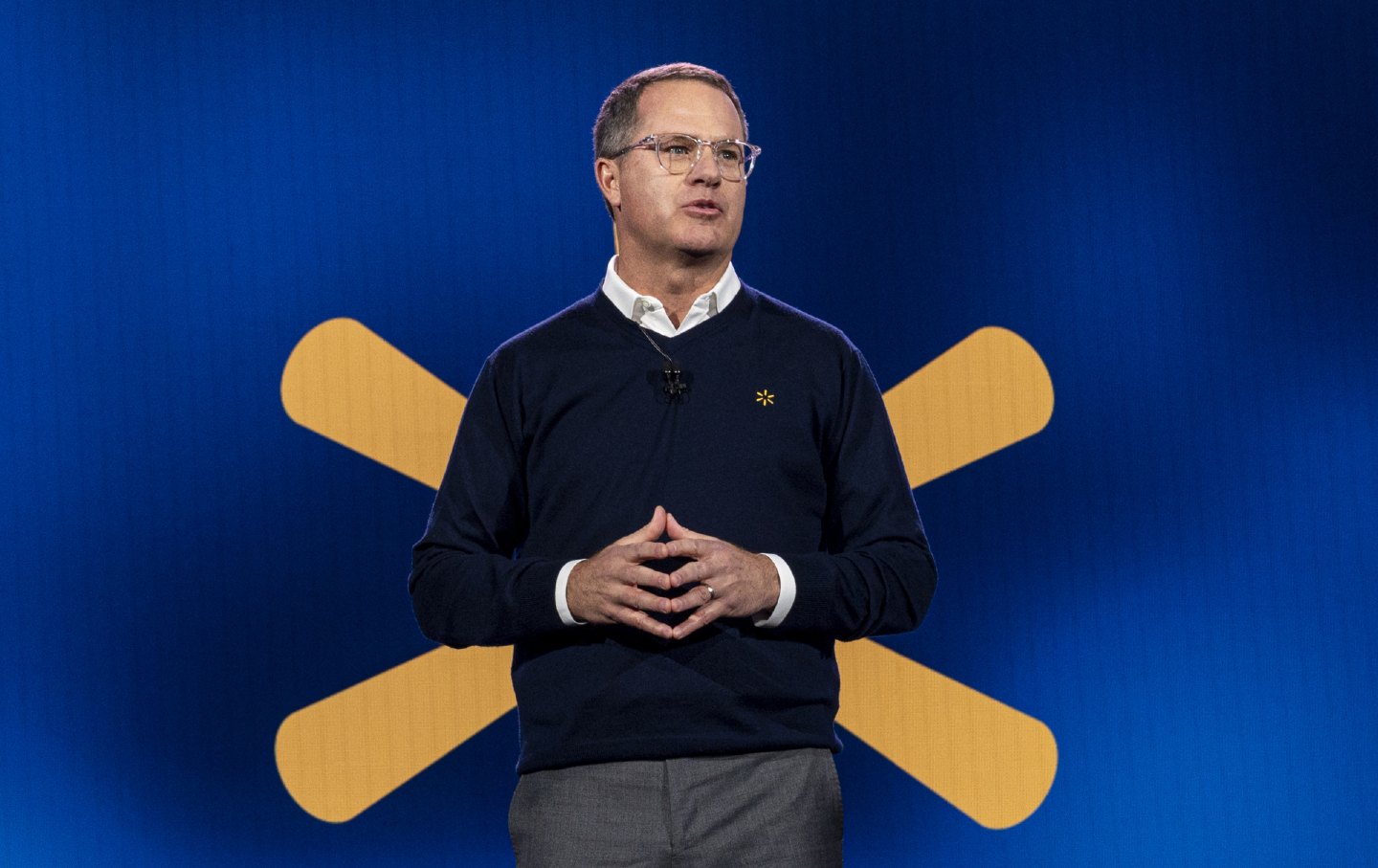
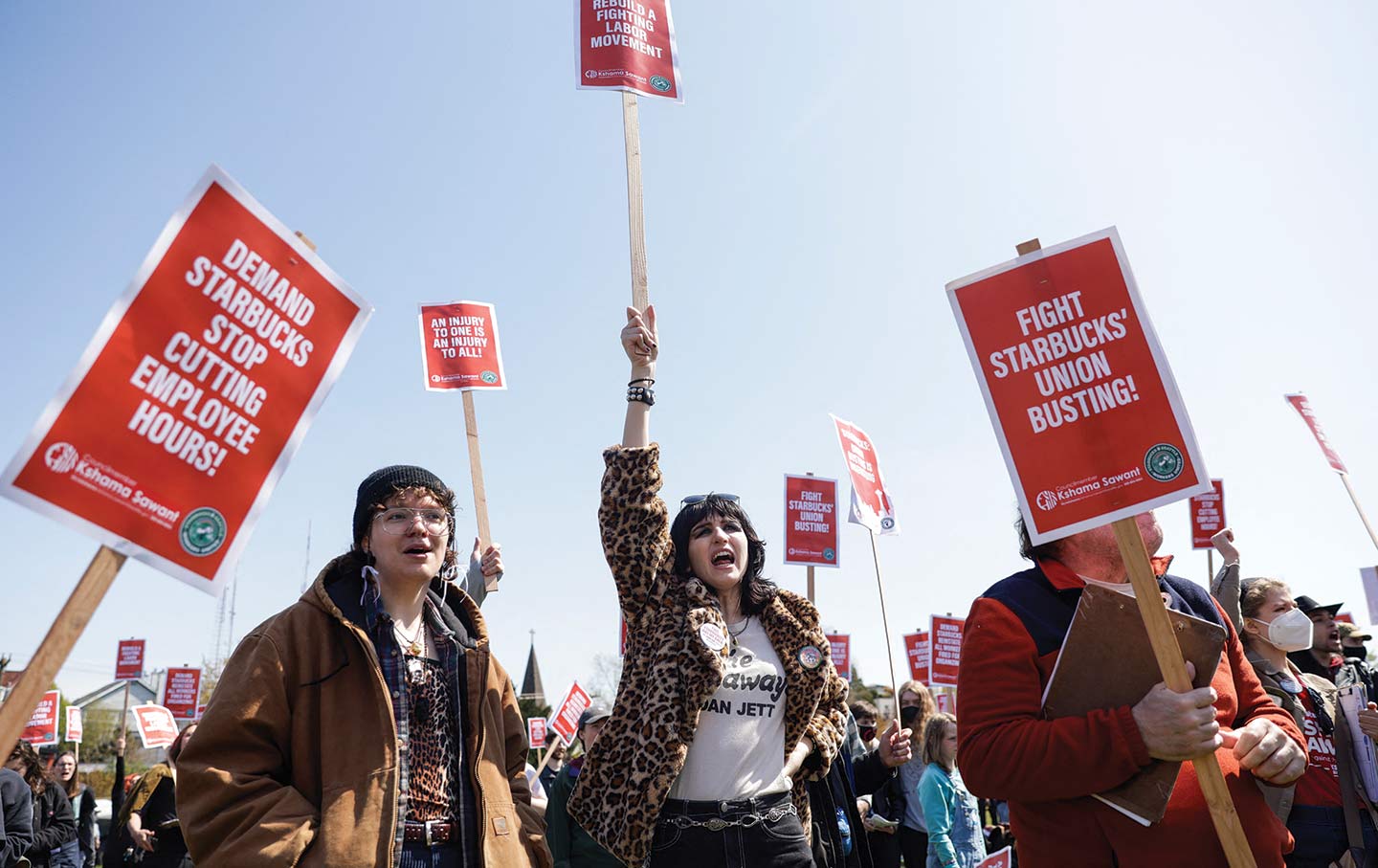
Organized Labor at a Crossroads Organized Labor at a Crossroads
How can unions adapt to a new landscape of work?

The WNBA Makes More Money Than Ever. What About the Players? The WNBA Makes More Money Than Ever. What About the Players?
WNBA players receive around 10 percent of league revenue, while the NBA gives 51 percent. With their bargaining agreement expiring in January, players want to share in the growth....
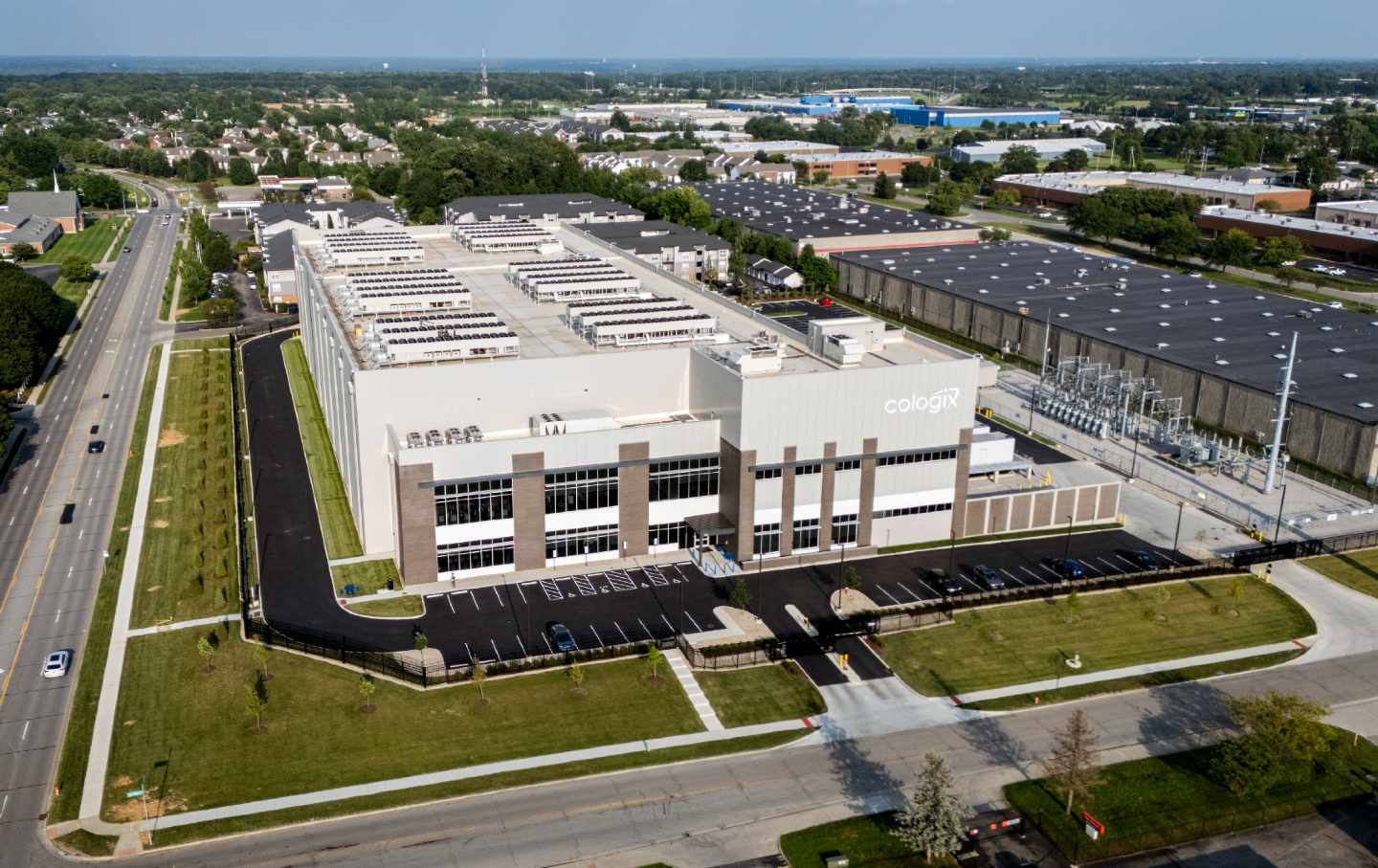
Anger at Corporate Power Is Everywhere Anger at Corporate Power Is Everywhere
It should guide the Democrats.

The EEOC Is Now Letting Workplace Discrimination Stand The EEOC Is Now Letting Workplace Discrimination Stand
The agency is unlawfully giving up on fighting disparate impact discrimination—meaning it’s “open season” on employees.
